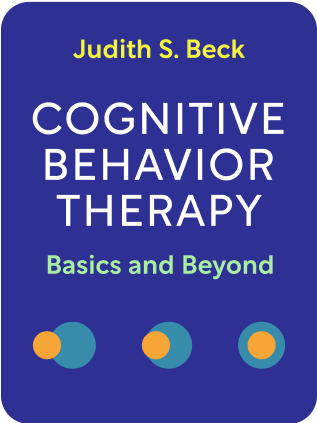

This article is an excerpt from the Shortform book guide to "Cognitive Behavior Therapy: Basics and Beyond" by Judith S. Beck. Shortform has the world's best summaries and analyses of books you should be reading.
Like this article? Sign up for a free trial here .
What are maladaptive coping mechanisms? Why is this type of coping mechanism harmful?
Maladaptive coping mechanisms are unhelpful responses to problems that can ultimately make the situation worse. If you understand maladaptive coping mechanisms, you can avoid negative thought patterns and respond to problems in a healthier way.
Keep reading for more about maladaptive coping mechanisms.
Maladaptive Coping Mechanisms
A patient’s cognitive conceptualization shapes the patient’s reaction, which is composed of emotional, physiological, and behavioral components.
To cope with negative beliefs and a cognitive conceptualization, patients often use a variety of coping mechanisms. Generally, a coping mechanism is often an extreme implementation of a behavior, or an extreme absence of the behavior. Examples:
- A patient tries to be perfect, or, on the other end of the spectrum, tries to appear purposely incompetent
- A patient seeks intimacy aggressively, or she avoids intimacy absolutely.
- A patient tries to control situations, or she abdicates control.
With maladaptive coping mechanisms, the patient progressively worsens her situation, because the behavior causes further problems, which further worsens the patient’s cognitive conceptualization.
Over time, the patient can be locked into a negative vicious cycle, where the patient’s biased information-processing model reinforces negative beliefs. Reinforcement can happen when:
- The patient selectively pays attention to negative data.
- The patient discounts positive data, even turning positive into negative data
- A patient may get an A on a test, then discount the grade with, “That test was too easy to mean anything.”
- A patient may get praise, then discount the praise with, “I don’t deserve it, my boss is wrong.”
- The patient may ignore positive or neutral data altogether.
- A patient who struggles at a task may not consider that other capable people have failed at the task, or that the task has poor instructions.
The negative vicious cycle works like this:
- A stressful situation arises.
- Automatic thoughts arise that cause a maladaptive, self-defeating reaction (maladaptive coping mechanism.)
- A negative outcome results, further strengthening patient’s negative core beliefs and aggravating the automatic thoughts.
- The patient also withdraws from situations that might lead to positive data.
- All this is interpreted by the patient not as a mental disorder, but rather that something is wrong with the patient. This worsens dysphoria.
Importantly, maladaptive coping mechanisms may offer some short-term relief to the patient but be destructive over the long term.
- For example, a patient feels anxious about taking a test. She stays in bed to calm her heart rate, but this causes her to arrive late to the test and get a poor grade. This aggravates her future anxieties.

———End of Preview———
Like what you just read? Read the rest of the world's best book summary and analysis of Judith S. Beck's "Cognitive Behavior Therapy: Basics and Beyond" at Shortform .
Here's what you'll find in our full Cognitive Behavior Therapy: Basics and Beyond summary :
- How to use CBT to overcome anxiety, sadness, anger, frustration, and stress
- How to address traumatic events earlier in your life, so that they have less hold on your thinking today
- The key ways to build rapport as a cognitive behavior therapist






